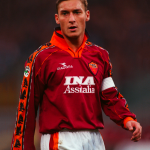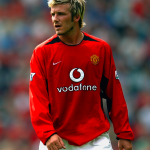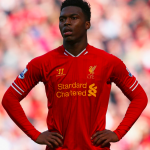
Will nobody in Serie A wear long sleeves again this year?
Which brands and players are contributing to the slow return of a great classic
September 27th, 2021
PUMA, adidas, Hummel and Umbro are the brands in the Premier League that have decided to revive a football legend of yesteryear, producing the long sleeves of Arsenal, Manchester City and United, Norwich, West Ham and Everton. The opposite fate for long-sleeved shirts in Italian football: none of the twenty clubs and nine technical sponsors in Serie A have released long-sleeved kits for this season, probably driven by low market demand. Ligue 1 follows the trend of Serie A, while in Spain Real Madrid have all their kits in long-sleeved versions, and in Germany Bayern are doing exactly the same as the Red Devils.
Before the word baselayer - the technical jersey that replaced the long sleeve - flooded the market and led, also for technical reasons, players to convert to a new stylistic practice, long sleeved jerseys were considered a symbol and representation of the aesthetics of the past.
The peak of the popularity of long-sleeved jerseys came in the second half of the 90s, the golden age of a footballing aesthetic in which 'baggy and cozy' reigned. The shirts worn by Batistuta, Ronaldo, Veron and Gascoigne in Italy in that era, which is far away in time but close at hand aesthetically, have marked the style of entire generations: it seems almost impossible to think of Alvaro Recoba wearing a short-sleeved Venezia shirt or captain Maldini wearing a tight-fitting long-sleeve. The long-sleeved baggy jersey boom continued until the early 2000s, coinciding with trends from the fashion world increasingly influenced by the entry of designers with a cultural and aesthetic background very close to hip hop.
Over the past five years, long sleeves have all but abandoned the football scene, except for a small minority of clubs and players who have continued to wear long-sleeved kits. A watershed moment came in 2019, when adidas decided to stop producing long-sleeved jerseys for MLS, the only market where demand was still satisfactory. But if 2019 is seen as the moment of the official decline of long sleeves, in 2020 there is an unexpected comeback: Sané and Havertz with Germany, Cristiano Ronaldo with Portugal, Sergio Ramos and Morata with Spain are the most evident cases of the return of the trend. Even at club level, especially last season, Lucas Vasquez and Ferland Mendy took the field in the long-sleeved camiseta blanca, James Rodriguez wore the long-sleeved shirt of the Toffees and Mbappé and Griezmann with the French national team.
This mini-boom has also involved Serie A to a small extent, with Keita Balde playing more games in long-sleeved blucerchiata shirts during his time at Sampdoria, foregoing the baselayer that has now become common practice. Historically, few teams have tried to continue the tradition of long sleeves: Napoli - first with Macron and then with Kappa - has almost always produced long sleeve versions. From Cavani's Kombat to Insigne's total black, with which he scored the Eurogoal at the Bernabeu in February 2017, to José María Callejón, one of the most fundamentalist players and who wore the most used jerseys for the longest time in the 1990s - he only surrendered this year to Florence, as the Viola did not produce long-sleeved jerseys.
The alternative solution that has been adopted by many players - just think of Theo Hernandez, Neymar and Lukaku among many others - is the technical jersey worn under the classic short-sleeved jersey, which becomes usable in all weather conditions and at all temperatures. The rules of the various leagues have also intervened to regulate the use of baselayers during official matches. The layering effect that can now be seen on pitches all over the world is stylistically interesting, as Foden, Henderson, Dybala and Coutinho have shown this season. Even some goalkeepers - who have always been the first players to be associated with long-sleeved shirts - are starting to move in this direction: Courtois, Navas, Ederson and Neuer are the best examples of this trend.
From the brands' point of view, there are several reasons why long sleeves have been shelved for a long period of time. There is an economic reason: the demand from the mass market has dropped dramatically over the years, evolving in exactly the same way as the fit of the jerseys;


There is also a technical reason for this: baselayers have become technically more high-performance, as they are made of a special synthetic material that can absorb sweat faster and counteract moisture on the pitch. The most active brand in this respect is adidas, and it's no coincidence: the Herzogenaurach-based brand has chosen to focus on the teams' archives and take up the great myths of the past, as shown by the kits of United, Real Madrid and the Gunners.









































.png)


.jpg)


















































